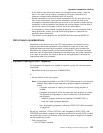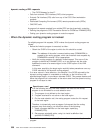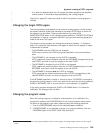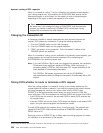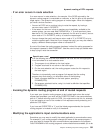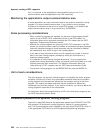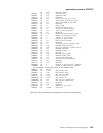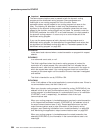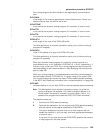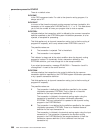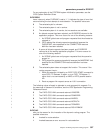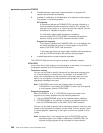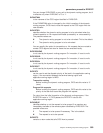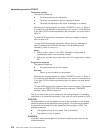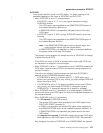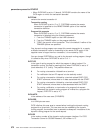Your routing program can alter the data in the application’s communications
area.
DYRACMAL
is the length of the routed-to application’s communications area. If there is no
communications area, this field is set to zero.
DYRACTCMP
is not used by the dynamic routing program. On invocation, it is set to nulls.
DYRACTID
is not used by the dynamic routing program. On invocation, it is set to nulls.
DYRACTN
is not used by the dynamic routing program. On invocation, it is set to nulls.
DYRBLGTH
is the length of the copy of the TIOA/LUC buffer.
This field applies only to dynamic transaction routing (not to the the routing of
program-link requests).
DYRBPNTR
is the 31-bit address of a copy of the TIOA/LUC buffer.
This field applies only to dynamic transaction routing (not to the the routing of
program-link requests).
When your dynamic routing program is invoked for routing, because of a
route-selection error, or for notification (DYRFUNC=0, 1, and 3, respectively), it
is given a copy of the input TIOA. Your routing program can alter the terminal
input data passed to the routed transaction—see “Modifying the initial terminal
data” on page 555.
When your routing program is invoked because a previously-routed transaction
has terminated normally (DYRFUNC=2), it is given a copy of the output TIOA.
Your routing program can monitor the output TIOA to detect possible problems
in the AOR—see “Receiving information from a routed transaction” on page 556.
DYRCABP
indicates whether or not you want CICS to continue standard abend processing.
Note: This field applies only to dynamic transaction routing, not to the the
routing of program-link requests. (If a linked-to program abends on a
remote region, the abend is mirrored in the local region—that is, it is
passed to the program that issued the EXEC CICS LINK command.)
The possible values are:
Y Continue with CICS abend processing.
N Terminate the transaction, do not continue with CICS abend processing,
and give control to the program specified by DYRLPROG.
This option enables you to pass control to a local program that can
handle the condition in your own way, and issue appropriate messages
to terminal users.
If you enter N, you must ensure that DYRLPROG specifies the name of
a valid program on the local system.
parameters passed to DFHDYP
Chapter 16. Writing a dynamic routing program 565
|
|
|
|
|
|
|
|
|
|
|
|
|
|
|
|
|



